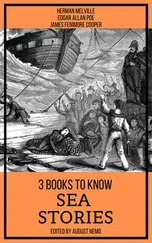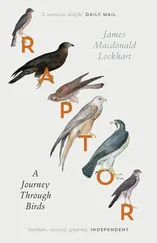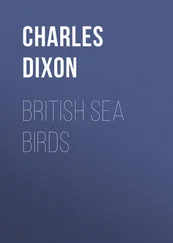Other huge bird-colonies in the western Arctic are to be found in Ellesmere Island, North Devon Island, Bylot Island and Baffin Island. Indeed, throughout the Arctic, where the naked rock escapes from the clutch of ice, and precipices rear to the sky from shores, the kittiwakes and dovekies, the puffins and guillemots, the fulmars, the glaucous gulls and pale herring-gulls, make their nests, and operate from them to the feeding grounds, to the leads in the ice, the convergences of tide and current, the upwelling zones at glacier faces and by the side of big icebergs. And below the cliff-ledges is the tell-tale of the bird city, rich plants, sudden patches of green in the arctic drab, green swards indeed, bright yellow-green grass; the round leaves of scurvy-grass, lush, six times as high as in the barren places, which means six inches high. On the slopes of scree and talus and broken rocks below is a special mat of little flowering plants, benefiting from the bird-dung leached and washed down from above; perhaps not the purple opposite-leaved saxifrage, which shuns this community (it is too rich for it), but alpine foxtail, the arctic poppy, the arctic buttercups, and the polar creeping willow; and tufted, drooping, alpine brook saxifrages; and the alternate-leaved golden saxifrage; and alpine mouse-ear chickweed, various arctic whitlow-grasses, poas and a woodrush, and Wahlbergella ; and sometimes carpets of Jacob’s ladder. There are many mosses, too, with bright colours; and all over these arctic cliffs—not only below the bird ledges—grow lichens. One of them is the beautiful orange Caloplaca elegans ; it grows all over the bird rocks of Spitsbergen, shines yellow orange among the dark rock and green grass-ledges of the fulmar-haunted bastions of Disko in West Greenland, and colours from top to bottom the mighty buttresses of Cape Searle in eastern Baffin Island, the site of what may be the world’s largest fulmar colony. Grey fulmars sit on green ledges above orange rocks.
In Britain, St. Kilda is the greatest sea-bird station. Upon its thousand-foot precipices nests one of the densest communities of vertebrate animals in the North Atlantic—probably the densest south of the Arctic Circle. The gannets of Boreray and its stacks have about seventeen thousand nests—one-sixth of the world population of this species. A quarter of Britain’s fulmars (up to forty thousand pairs) nest on St. Kilda. Undoubtedly more than a million puffins’ eggs are laid on St. Kilda in a normal year; the question is, how many million? There are seven separate puffin-slopes on St. Kilda each of which is larger than the largest puffin colony anywhere else in the British Isles, even the largest puffinry in the mossy talus-slopes of the Shiant Isles, where blocks of columnar basalt lie below the cliffs like the forgotten bricks of a child. The puffin is certainly one of the most numerous birds in the North Atlantic. In his monograph on the puffin (1953) Lockley estimates a minimum world population of 15,000,000 adults.
From the study of the ecology of animals we are learning that their numbers are controlled primarily by the amount of food they can get, and only secondarily by their parasites and predators; and parasites are probably more important than predators. But there are exceptions to this; and the chief one is when the predator is man (another is when new predators are introduced through his agency). Except in a few places such as most of Greenland, Jan Mayen, Spitsbergen, Franz Josef Land and a few other arctic islands, man is, or has been, the most important predator of sea-birds. He has been one, of a kind, ever since he has been Man—even before; for there is ample evidence that during the second of the two advances of the ice in the second of the two glaciations of the Great Ice Age, some of the latest members of the species Homo neanderthalensis ate great auks. This was about twenty thousand years ago; the Neanderthals left their auk bones in the cave of St. Brélade in Jersey and in the Devil’s Tower at Gibraltar. Their successors, the first of Homo sapiens , Men of the Aurignacian age (the early part of the Upper Old Stone Age, c .16,000 to c. 11,000 B.C.), were of two main races, the tall short-faced Crô-Magnons, and the shorter Grimaldians, perhaps closely related to African bushmen (W. J. Sollas, 1924). Great auk bones have been found in Grimaldian deposits in the Grotta Romanelli in the heel of Italy * and in another cave whose habitation goes back to the end of the Old Stone Age, El Pendo in north Spain, a wall-etching ( Fig. 12) of Magdalenian age ( c. 8,000 B.C.) may represent a great auk (H. Breuil and others, 1911; G. Clark, 1948). It is probable that between the end of the last glaciation of the Ice Age (about 15,000 B.C. in southern Europe, about 10,000 B.C. in northern) and the present day, i.e. during the Upper Old Stone, Middle Stone, New Stone, and Iron Ages the great auk had quite a wide distribution; judging by the number of bones, and the presence of the bones of young, in some prehistoric kitchen-middens in Britain and western Scandinavia, its breeding-range was possibly wider than it was found to be in historical times (Gulf of St. Lawrence, Newfoundland, Iceland, Faeroes and Britain). We cannot, however, quite agree with Clark (1948), who has collected the information about these deposits, that it was certainly wider, for it seems to us likely ( see here) that the young great auk left its breeding skerry very early, perhaps, like the razorbill, without either primary or secondary wing-feathers, not much more than a fortnight after hatching; and probably swam with its parents many hundreds of miles before ‘fledging.’ Clark’s list shows great auk bones in middens of the Middle Stone Age in France, Denmark, West Sweden and Norway, of the New Stone Age in France, Denmark and Norway, of the Iron Age in west Sweden and Norway. Several brochs (small forts) in Orkney and Caithness inhabited by the Picts also contained great auk bones; this practically brings the great auk to historical times.
FIG. 12
Upper Palaeolithic (probably Magdalenian) rock-engraving at El Pendo, near Santander, North Spain, showing what are probably great auks of which modern sketch on left. (After H. Breuil, 1911; G. Clark, 1948)
We suspect that the prehistoric exploitation of the great auk was largely confined to interception of the birds on passage and in their winter quarters; * the final collapse and extinction of the species took place only when Man in modern ships reached and attacked its main breeding-haunts.
These, as far as can be discovered, were the certain breeding-colonies of the great auk:
In Britain, St. Kilda and Papa Westray
In Iceland, Geirfuglasker and Eldey, S.W. of Cape Reykjanes and Geirfuglasker in the Westmann Islands
In the Magdalen Islands (Gulf of St. Lawrence), Bird Rocks
In Newfoundland, Funk Island (east)
Other stations at which it possibly nested, but about which the evidence is not entirely satisfactory, are:
In Britain, the Calf of Man
In the Faeroes, Fugloy and Streymoy
In Iceland, Hvalbakur and Tvísker
In Maine, the Georges Islands in Knox County
In Nova Scotia, an island near Yarmouth (? in Tusket Is.)
In the Gulf of St. Lawrence, Cape Breton
In Newfoundland, ‘Penguin Island’ off Cape La Hune (south) and ‘Penguin Island’ near Cape Freels (east)
In Greenland, Leif’s and Erik den Røde’s Islands, near Angmagssalik.
There is no doubt that the main population, when history overtook the great auk, was around the island of Newfoundland, and particularly upon Funk Island, where, according to Peters and Burleigh (1951), it was probably first seen in 1170 by some early Norse explorers of the New World from Greenland.
Читать дальше












